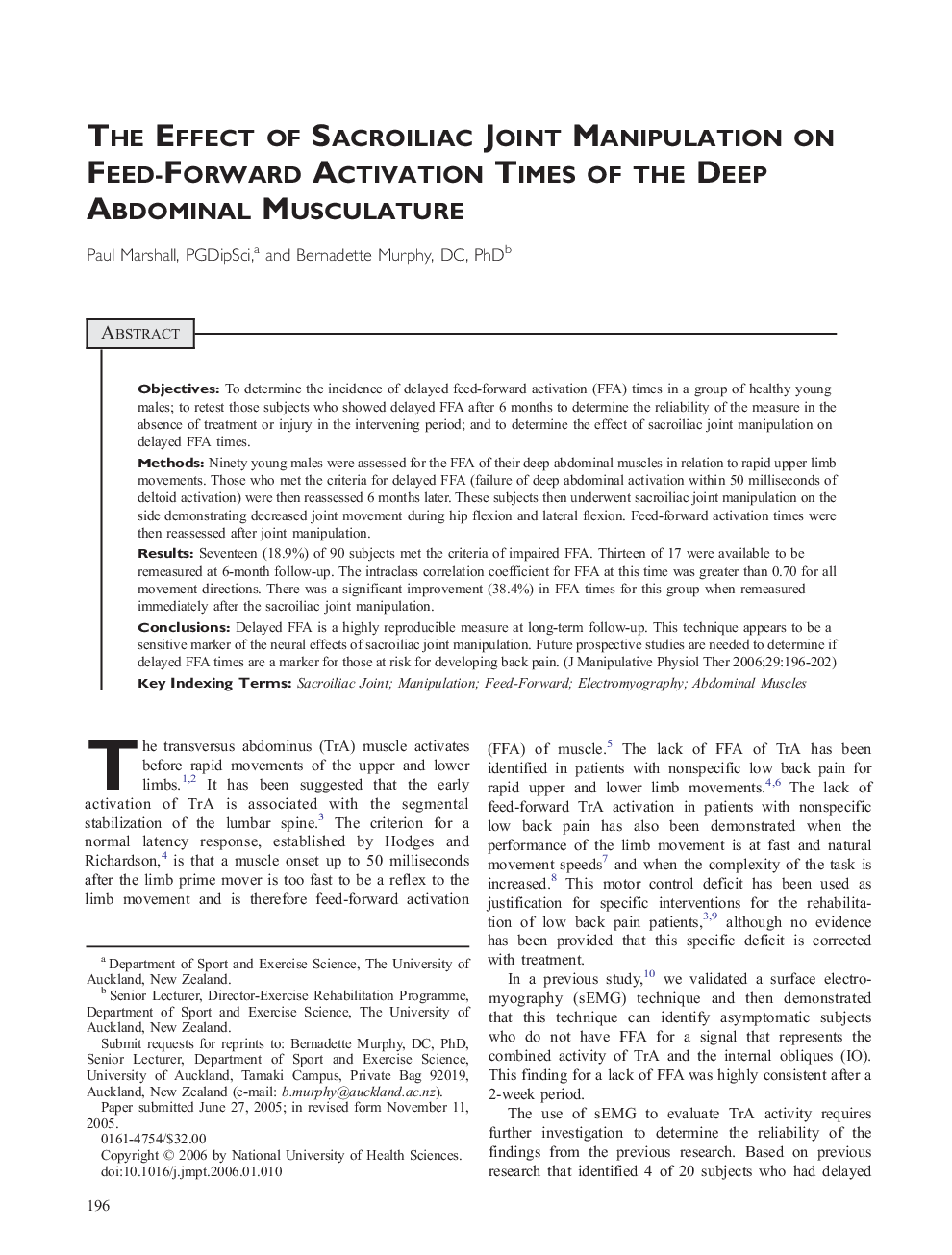| Article ID | Journal | Published Year | Pages | File Type |
|---|---|---|---|---|
| 2621553 | Journal of Manipulative and Physiological Therapeutics | 2006 | 7 Pages |
ObjectivesTo determine the incidence of delayed feed-forward activation (FFA) times in a group of healthy young males; to retest those subjects who showed delayed FFA after 6 months to determine the reliability of the measure in the absence of treatment or injury in the intervening period; and to determine the effect of sacroiliac joint manipulation on delayed FFA times.MethodsNinety young males were assessed for the FFA of their deep abdominal muscles in relation to rapid upper limb movements. Those who met the criteria for delayed FFA (failure of deep abdominal activation within 50 milliseconds of deltoid activation) were then reassessed 6 months later. These subjects then underwent sacroiliac joint manipulation on the side demonstrating decreased joint movement during hip flexion and lateral flexion. Feed-forward activation times were then reassessed after joint manipulation.ResultsSeventeen (18.9%) of 90 subjects met the criteria of impaired FFA. Thirteen of 17 were available to be remeasured at 6-month follow-up. The intraclass correlation coefficient for FFA at this time was greater than 0.70 for all movement directions. There was a significant improvement (38.4%) in FFA times for this group when remeasured immediately after the sacroiliac joint manipulation.ConclusionsDelayed FFA is a highly reproducible measure at long-term follow-up. This technique appears to be a sensitive marker of the neural effects of sacroiliac joint manipulation. Future prospective studies are needed to determine if delayed FFA times are a marker for those at risk for developing back pain.
